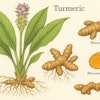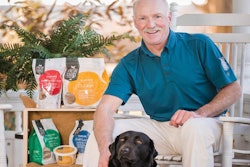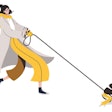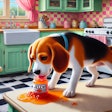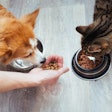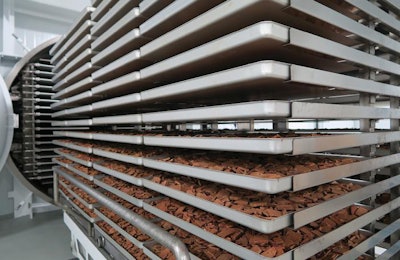
Freeze-dried pet food, a segment of the growing superpremium pet food market, caters to the consumer looking for high-end, customized options for their dog or cat. An increasing trend over the last few years, freeze-dried food has the benefits of technology, nutrition and convenience on its side as it increasingly takes up space on pet store shelves.
The freeze-drying process — industry opportunities
The actual process of freeze-drying pet food is fairly straightforward. “The simplified version of [the process] is to first receive in frozen cuts of meat,” said Justin Stadden, senior business unit manager of The Scoular Company. “The meat is tempered to allow it to be diced or shaped to the desired form, then it’s put into the blast freezer for a deep freeze. After that, it’s rolled into the freeze-drying chambers, where it stays for about 12 hours. Finally, the trays are rolled out and packaged (see Figure 1).”
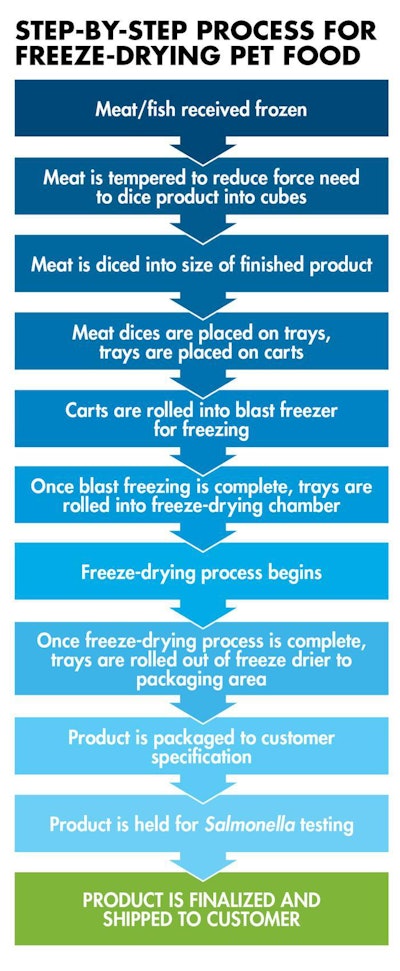
FIGURE 1: The process for freeze-drying pet food is fairly straightforward, according to the industry, but it does involve several precise steps.
For all its simplicity, the technology, which is steadily gaining ground in the industry, is giving pet food producers some interesting avenues for different products as consumer demands become more complex. “Freeze-dry, as we all know, is only one of the several preservation technologies that have been out in the world of food preservation technology,” said John Milne, strategic leadership with Canature Processing Ltd., which has partnered with Scoular (Scoular is the manufacturing representative and sales arm of Canature’s production plant). “Freeze-drying pet food has come to the forefront over the last three or four years, and it’s trending up ever more so year over year."
“Freeze-drying technology was applied to pure meats, typically the ubiquitous beef liver freeze-dried treat, but we’re now seeing freeze-dry technology being applied to freeze-dried + kibble (FD+K) pet food formulations,” said Milne. “We’re seeing that accelerated velocity going into the market, and these seem to be fusion diets. We’re taking raw meats — a single muscle meat like beef heart or pork heart, or an amalgam of red meats or poultry meats or fish meats — and those products are processed and put through the freeze-drying process. And we’re coming out with freeze-dried cubes being added to the kibble.”
This all plays into several current pet food trends, such as the desire for “natural” formulations, less processing, and nutrient-dense and functional foods. “Also trending is being able to have food in smaller packaging, that’s easier to serve to your pet if you have an active lifestyle,” said Taylor Wiebler, marketing manager at Scoular. “Freeze-dried goes hand-in-hand with that, having a high-protein item that is easily accessible whether you’re traveling or at home. It taps into that niche, as well, with people moving to more urban areas and having less space for their pets and to store pet food.”
Freeze-dried pet food and food safety
In general, food safety is a significant concern in the pet food industry. But there is a particular spotlight on raw and freeze-dried foods. “I think the concern that is brought up the most is reducing any pathogens in the meat throughout the freeze-drying process,” said Wiebler.
Canature covers all its bases, according to Milne, with a comprehensive food safety strategy. “First and foremost, food safety goes all the way back to only dealing with federally registered processing plants, and that applies to the red meat, poultry and marine sourced ingredients,” he said. “We have to have the approval and registration of all vendors. And once product hits our dock, we then deploy our QA/QC (quality assurance/quality control) food safety manager and technicians to sample material all the way through the production freeze-drying processing sequences, out to the finished product. We are a hold and release facility that, irrespective of anything, uses third-party national laboratories to test before anything is allowed to leave our premises and be loaded on the trucks for delivery."

Diced meats are put on trays, then rolled into blast freezers to be deep-frozen. | Courtesy The Scoular Company
“We operate under CFIA (Canadian Food Inspection Agency), FDA (US Food and Drug Administration) and GFSI (Global Food Safety Initiative) certifications,” said Milne. “We’re an SQF (Safe Quality Food Institute)-certified facility. We work with our partners and preferred suppliers where they’re sourcing human materials. So when we receive our beef liver, for example, that liver is certified as fit for human consumption.”
The future of freeze-dried pet food
More intricate combinations and more robust formulas are on the horizon, according to those in the industry. “I would say novel meats, more complete meals — we expect that to be a growing trend,” said Stadden. “We expect more mixing of multiple proteins and/or carbohydrates together, whereas freeze-dried was traditionally one ingredient in, one ingredient out. So that’s kind of where the future is — going to the full meal and adding functional ingredients to freeze-dried ingredients.”
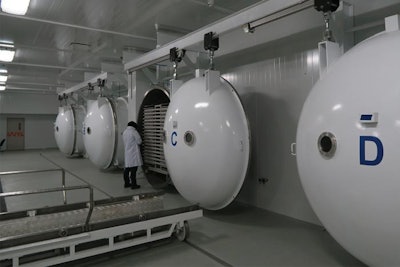
After being deep-frozen, the trays of meat are rolled into freeze-drying chambers for roughly 12 hours. | Courtesy The Scoular Company
And of course, food safety will always be an evolving challenge. “Patentable processing applicable to the issues and concerns in the market that we face towards the kill step [will be a focus],” said Milne. “Unique kill step technology is one of the distinct things we see emerging that needs to be in the market and applied to freeze-dried technology.”
One thing that’s certain is that the segment will continue to expand. Feeding into the higher-end consumer’s desires for customization and the feeling that their pets are eating as well as they are, freeze-dried pet food provides the perfect opportunity to fulfill market needs with innovation.
Industry perspective: Raw material trends and challenges
“I think [raw trends] are kind of following some of the other humanization trends,” said Justin Stadden, senior business unit manager for The Scoular Company. “We’re moving from some of the base products, like beef and pork liver or chicken, to more novel proteins. Following the trends that we’ve seen on the superpremium pet food side, we’re starting to see more interest in meats like duck, rabbit, quail, kangaroo, wild boar, etc.”
As far as challenges go, quality is key. “It’s critical that we have high-quality raw materials coming in,” said John Milne, strategic leadership with Canature Processing Ltd. “Where most freeze-dry operations are taking a single meat and putting it into the freeze-dry chamber, the interesting aspect for ourselves is the ability to take in various meats, create unique flavors and meals and process those in our wet meat facility in order to create unique diets. So if you have access to source globally, it gives you great latitude to create these analog foods and add functional ingredients, then apply the freeze-dry technology to it. It’s a culmination of sourcing the unique materials and then being able to process and blend the raw materials into unique products.”
More on pet food production


